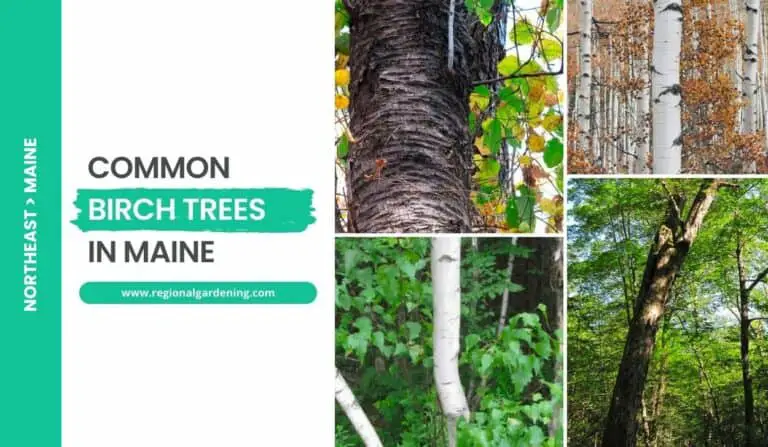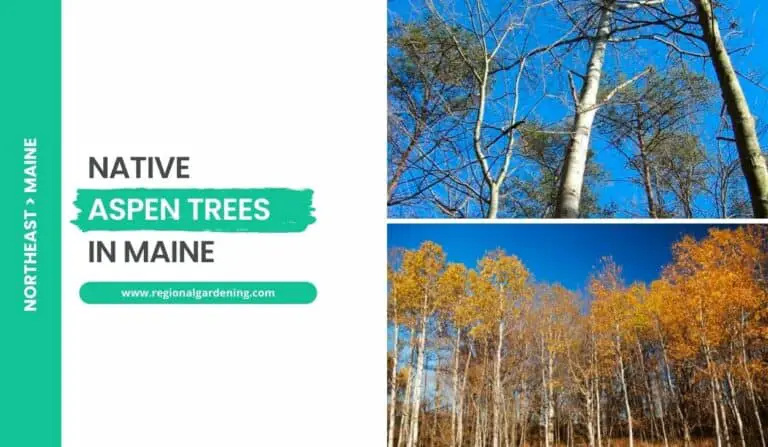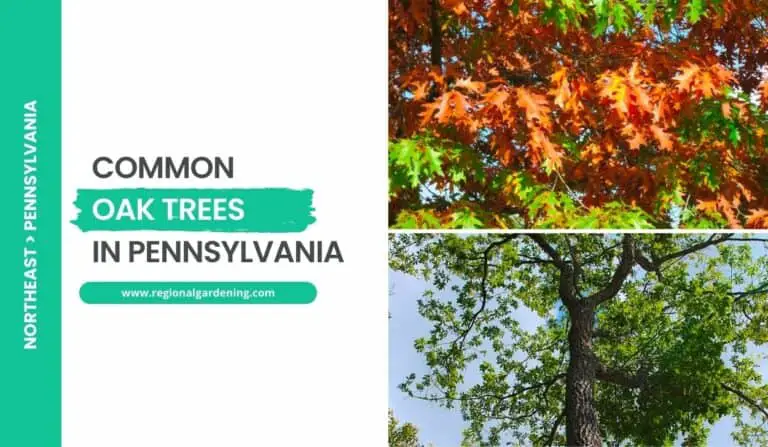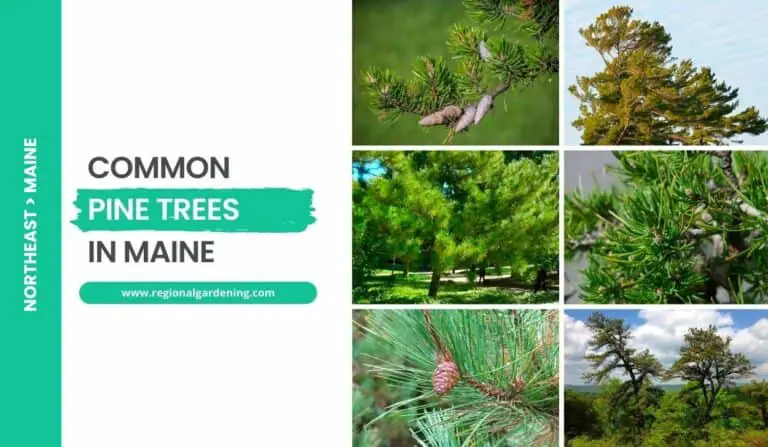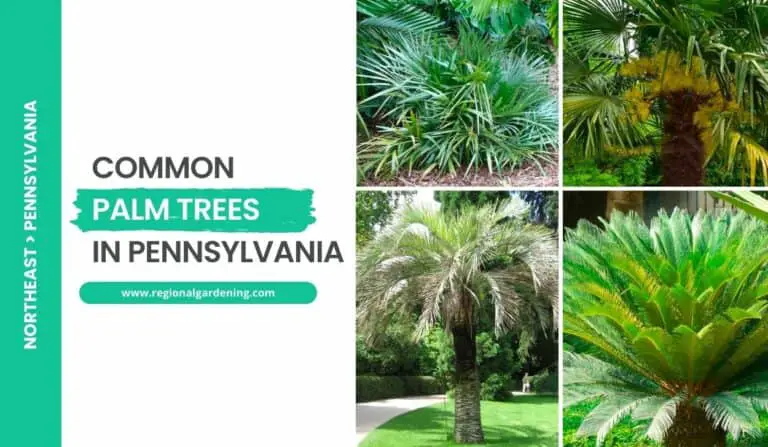2 Ash Trees In Pennsylvania (Photos & Details)
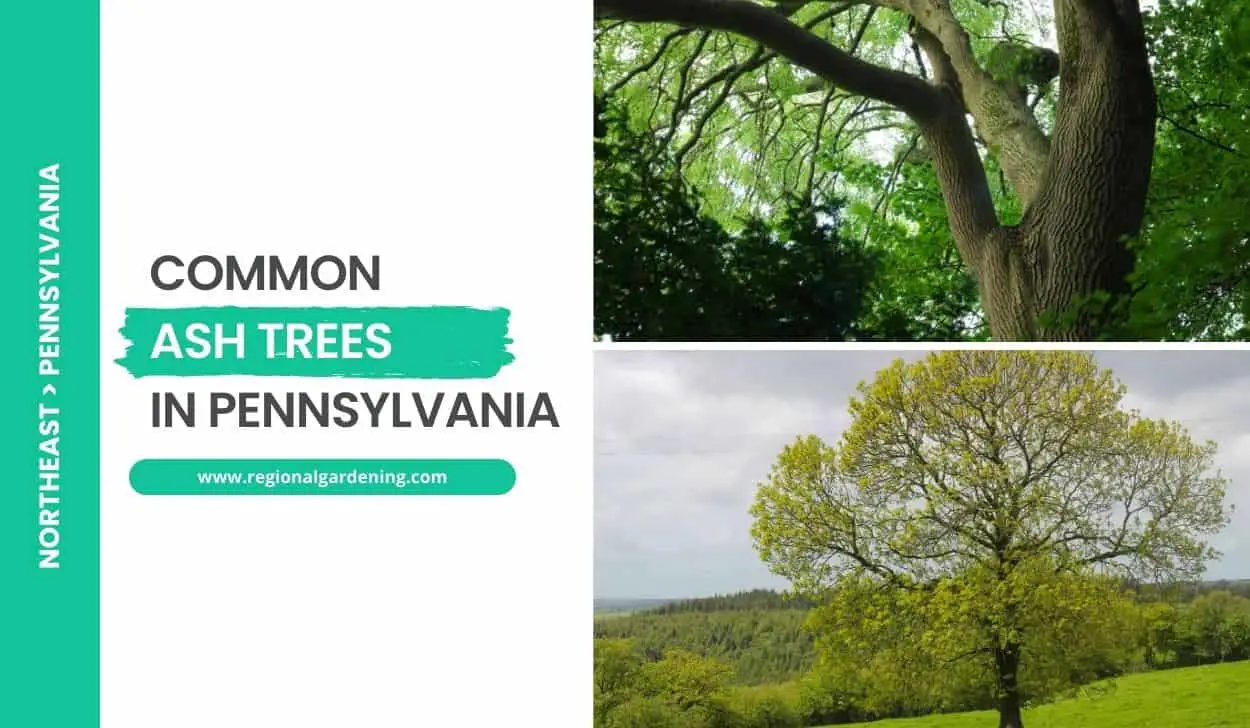
There are two types of ash trees in Pennsylvania: native White Ash and non-native Black Ash.
This article will assist you in identifying these trees by providing detailed information and clear photographs. However, it is not only about identifying them; it is also about their struggle to survive. An invasive insect known as the Emerald Ash Borer is threatening these trees.
So, if you have enough space in your backyard, plant an ash tree and contribute to conservation efforts.
1. White Ash
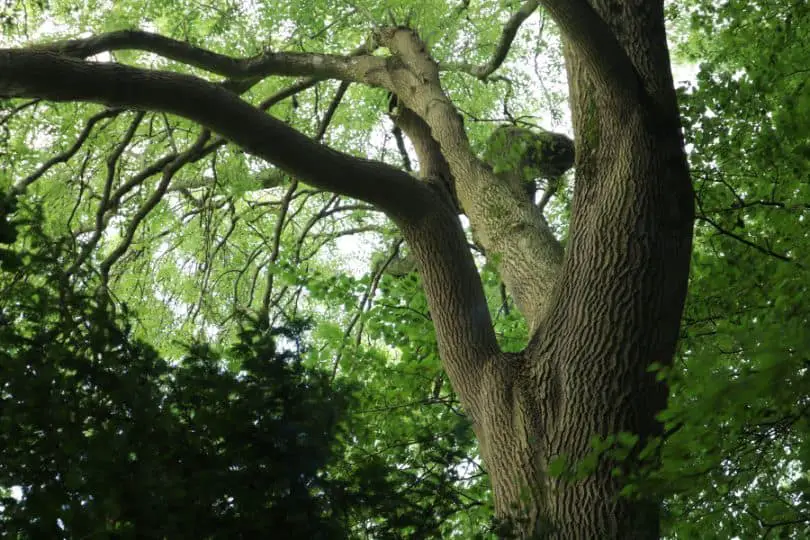
- Scientific Name: Fraxinus americana L.
- Common Name(s): White Ash
- Mature Height: 80 feet or more (24 meters or more)
- Native Region: North America
- Flowers: No flowers
- Fruit: Winged seed (samara), usually 1″ to 2″ long and ¼” wide, shaped like a canoe paddle with a rounded wing attached at the tip of the seed
- Uses: The wood of White Ash is used for sporting goods (especially baseball bats), handles, agricultural tools, and furniture.
White Ash is one of the most common ash trees in Pennsylvania. It is a huge tree with a long, straight trunk that can reach heights of 80 feet or more.
White Ash leaves are complex and opposing, reaching about 10 inches long. They have 5-9 stalked leaflets with a pale underside and edges that are either entire or have a few rounded teeth toward the tip. The leaves of the White Ash turn a variety of hues in the fall, ranging from yellow to dark maroon.
White Ash twigs are robust, smooth, gray-brown in hue, with a few faint lenticels. The surface of mature twigs peels, and the buds are blunt and rusty-brown. These buds are arranged into half-circular leaf scars with a notched top. The White Ash bark is gray-brown in color, with diamond-shaped furrows divided by tiny interlacing ridges.
White Ash, a native of North America, is common throughout Pennsylvania, particularly on rich soils, except in the highlands. It is typically seen in natural regions and landscapes. In terms of habitat, White Ash prefers well-drained soil and can endure a wide range of moisture levels.
While the White Ash lacks attractive flowers, it does produce winged seeds known as samaras. These samaras are typically 1″ to 2″ long and 14″ wide, resembling a canoe paddle with a rounded wing attached at the tip of the seed, and can be disseminated by wind to aid in tree reproduction.
White Ash is valued in Pennsylvania for its wood, which is strong and durable and is used for a variety of purposes, including the production of sporting goods, particularly baseball bats. White Ash wood is also used for handles, agricultural tools, and furniture.
It is critical to provide proper sunlight and moisture conditions for White Ash trees in Pennsylvania landscapes. White Ash thrives in full sun to partial shade and well-drained soil. Regular watering is required, especially during dry periods. Pruning can be done to maintain the shape and remove any dead or damaged branches.
2. Black Ash
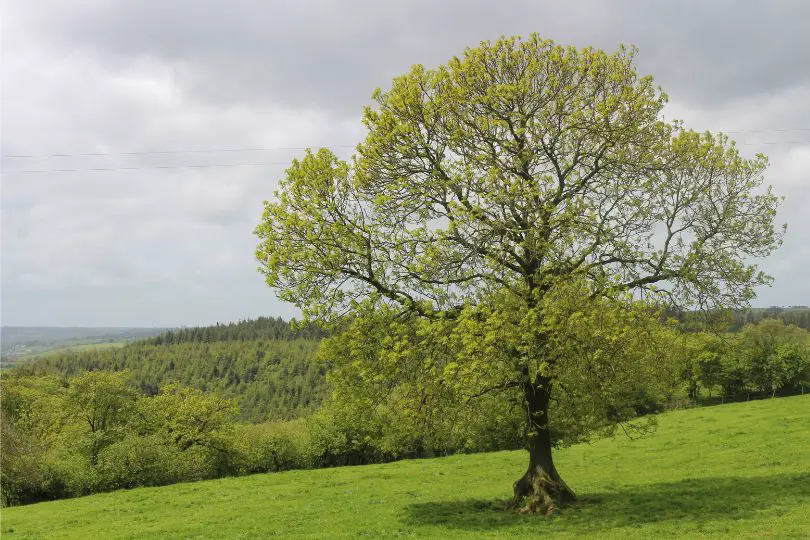
- Scientific Name: Fraxinus nigra
- Common Name(s): Black Ash
- Mature Height: 40-60 ft (12-18 m)
- Native Region: North America
- Flowers: No Flowers.
- Fruit: Small, winged samaras
- Uses: Wood is used for making furniture, baskets, and hockey sticks. The bark and leaves have medicinal properties and can be used to treat fevers, rheumatism, and stomach ailments.
The Black Ash (Fraxinus nigra) is a medium-sized deciduous tree that can grow to be 40-60 feet tall. It is native to North America and can be found throughout the state of Pennsylvania. Black Ash leaves are complex and dark green in color, with 7-11 serrated leaflets. The foliage turns a vivid golden in October before shedding for the winter.
The Black Ash’s bark is grayish-brown in color and gets fissured and ridged as the tree grows. As a fruit, the tree bears miniature, winged samaras. The wind blows these maple-like seeds about.
Black Ash trees are commonly found in Pennsylvania along wetlands, swamps, and stream banks where the soil is moist and acidic. They are especially well adapted to these settings because they can endure periodic flooding.
While Black Ash trees do not produce prominent blossoms, their timber is highly valued. The wood has a gritty feel and is pale gray in hue. It is well-known for its strength and is often used in the manufacture of furniture, baskets, tool handles, and even hockey sticks. Black Ash has traditional medicinal virtues in addition to its practical usefulness. To treat fevers, rheumatism, and stomach disorders, the bark and leaves can be made into tea.
It is critical to pick a spot with wet soil and partial shade when planting Black Ash in Pennsylvania landscapes. Because the tree prefers acidic environments, it may be necessary to add organic matter or fertilizer to sustain optimal growth. Watering is also necessary on a regular basis, especially during dry spells.
Common Ash Trees In Pennsylvania – Frequently Asked Questions (FAQs)
Let’s go through some of the most commonly found questions on the internet related to ash trees in Pennsylvania.
Are there native ash trees in Pennsylvania?
Yes, there are native ash trees in Pennsylvania. The White Ash (Fraxinus americana) is the most common native ash species in Pennsylvania. It is a deciduous tree native to North America’s eastern and central regions, including Pennsylvania. White ash trees are known for their distinctive compound leaves and are commonly found in the state’s forests and woodlands.
The Emerald Ash Borer (Agrilus planipennis), an invasive insect that has seriously harmed ash populations, has put native ash trees in Pennsylvania, as well as those throughout much of North America, in danger. Efforts have been made in the state to manage and mitigate the impact of this invasive species on native ash trees.
What are some of the uses of ash trees in Pennsylvania?
Ash trees in Pennsylvania serve various purposes. Their wood is prized for its strength and straight grain, and it is frequently used to make fine furniture, flooring, and tool handles. Ashwood is also used to make sports equipment such as baseball bats and musical instruments such as guitars and drum shells. As a great source of firewood, it produces a lot of heat with little smoke, making it a popular choice for heating homes and wood stoves.
Ash trees provide aesthetic appeal and shade in landscaping, enhancing the beauty and comfort of parks, streets, and residential areas across the state.
Similar Articles
- Common Flowering Trees In Pennsylvania
- Common Maple Trees In Pennsylvania
- Common Cherry Trees In Pennsylvania
- Common Pine Trees In Pennsylvania
- Native Locust Trees In Pennsylvania
- Common Nut Trees In Pennsylvania
- Common Cedar Trees In Pennsylvania
- Common Palm Trees In Pennsylvania
- Common Birch Trees In Pennsylvania
- Common Aspen Trees In Pennsylvania
- Common Spruce Trees In Pennsylvania
- Common Oak Trees In Pennsylvania
- Common Elm Trees In Pennsylvania
- Pink Flowering Trees In Pennsylvania
- White Flowering Trees In Pennsylvania
- Purple Flowering Trees In Pennsylvania
Sources
The Regional Gardening team makes sure that the information in our articles is accurate by only using sources that are known to be trustworthy. Some of these sources are peer-reviewed journals from government agencies, well-known universities, and scientific research organizations.
- Native Plant Resources, Pennsylvania Native Plant Society
- Trees & Shrubs Varieties, PennState Extension
- Landscaping With Natives, Pennsylvania Department Of Conservation, & Natural Resources.
- Explore Pennsylvania Forests, Pennsylvania Department Of Conservation, & Natural Resources.



